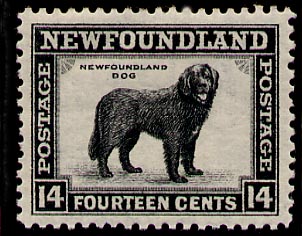
History

 |
Newfoundland History |
 |
Snug Harbor
[This document was published in 1948. For the full citation, see the end of the text.]
Newfoundland's National Convention, in charting a course for the future, had offered islanders a choice of only two snug harbors: the present commission form of government, or self-government. Actually, there were more ports, and by last week most islanders had heard about them.
The Responsible Government League had come out flatfooted for full Dominion status. Fiery David Jackman, boss of the Wabana Mine Workers (C.I.O.), was in the middle of a noisy drive for union with the U.S. When the government-owned radio stations refused him air time, he campaigned from the lone commercial station, low-powered VOCM. The daily press largely ignored him, but the tabloid weekly Sunday Herald pitched in: "Thousands throughout the country . . . desire union with the U.S. "
An even louder noise was made by a boisterous Confederation-with-Canada campaign. Yeasty Joseph R. Smallwood and his pro-confederationists were busy as tent-show barkers on a Saturday afternoon. They had had enough convention members on their side to file a minority confederation report with London . Then they had started an island-wide petition to back it up. As confederate canvassers covered the island, the response was echo quick. Into Smallwood's home in St. John's poured 1,700 telegrams; hundreds of letters, from over 600 towns and settlements.
Last week, when the flood reached 50,000 signatures (Newfoundland's pop. 316,000), "Joey" bustled over to Government House, presented his petition to the island's ex-miner governor, burly Sir Gordon Macdonald. He would pass it along to Britain 's Sir Philip Noel-Baker. As Commonwealth Relations Secretary, Sir Philip had the power to add confederation to the Newfoundland referendum next spring. Best guess: he would.
Source: " Snug Harbor ", Time (Canadian edition), March 1, 1948 , p. 14.
Return to Canadian Views of Newfoundland's Entrance into Confederation
© 2004 Claude Bélanger, Marianopolis College |